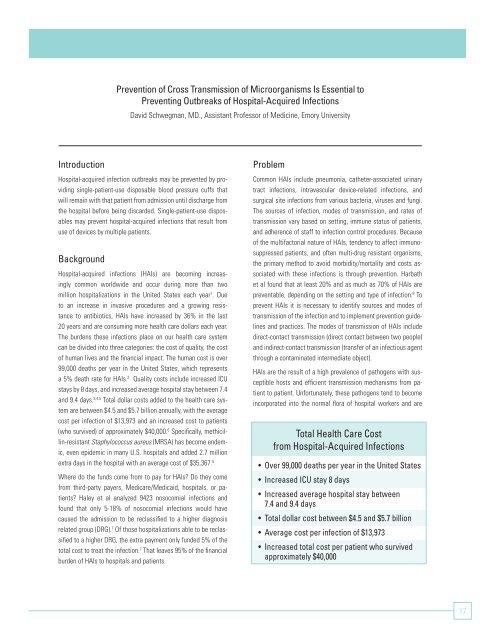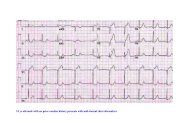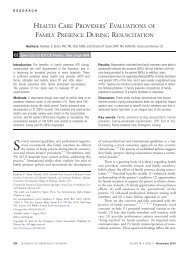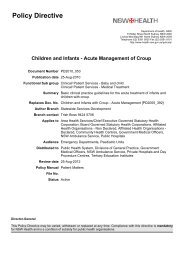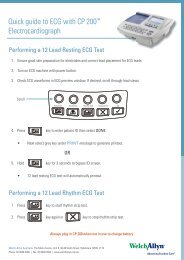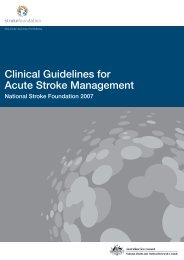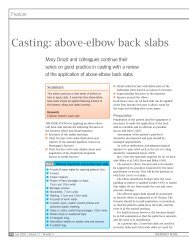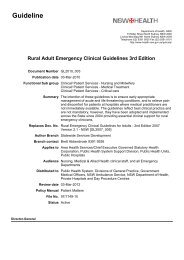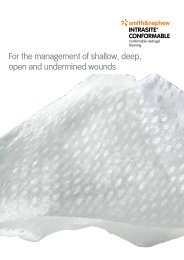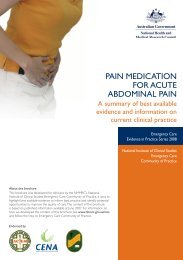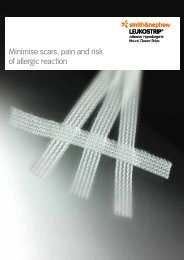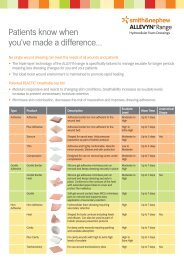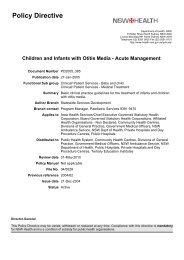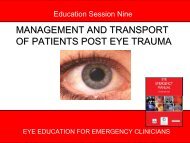Non Invasive Blood Pressure - Living on the EDge
Non Invasive Blood Pressure - Living on the EDge
Non Invasive Blood Pressure - Living on the EDge
You also want an ePaper? Increase the reach of your titles
YUMPU automatically turns print PDFs into web optimized ePapers that Google loves.
Preventi<strong>on</strong> of Cross Transmissi<strong>on</strong> of Microorganisms Is Essential to<br />
Preventing Outbreaks of Hospital-Acquired Infecti<strong>on</strong>s<br />
David Schwegman, MD., Assistant Professor of Medicine, Emory University<br />
Introducti<strong>on</strong><br />
Hospital-acquired infecti<strong>on</strong> outbreaks may be prevented by providing<br />
single-patient-use disposable blood pressure cuffs that<br />
will remain with that patient from admissi<strong>on</strong> until discharge from<br />
<strong>the</strong> hospital before being discarded. Single-patient-use disposables<br />
may prevent hospital-acquired infecti<strong>on</strong>s that result from<br />
use of devices by multiple patients.<br />
Background<br />
Hospital-acquired infecti<strong>on</strong>s (HAIs) are becoming increasingly<br />
comm<strong>on</strong> worldwide and occur during more than two<br />
milli<strong>on</strong> hospitalizati<strong>on</strong>s in <strong>the</strong> United States each year 1 . Due<br />
to an increase in invasive procedures and a growing resistance<br />
to antibiotics, HAIs have increased by 36% in <strong>the</strong> last<br />
20 years and are c<strong>on</strong>suming more health care dollars each year.<br />
The burdens <strong>the</strong>se infecti<strong>on</strong>s place <strong>on</strong> our health care system<br />
can be divided into three categories: <strong>the</strong> cost of quality, <strong>the</strong> cost<br />
of human lives and <strong>the</strong> financial impact. The human cost is over<br />
99,000 deaths per year in <strong>the</strong> United States, which represents<br />
a 5% death rate for HAIs. 2 Quality costs include increased ICU<br />
stays by 8 days, and increased average hospital stay between 7.4<br />
and 9.4 days. 3,4,5 Total dollar costs added to <strong>the</strong> health care system<br />
are between $4.5 and $5.7 billi<strong>on</strong> annually, with <strong>the</strong> average<br />
cost per infecti<strong>on</strong> of $13,973 and an increased cost to patients<br />
(who survived) of approximately $40,000. 6 Specifically, methicillin-resistant<br />
Staphylococcus aureus (MRSA) has become endemic,<br />
even epidemic in many U.S. hospitals and added 2.7 milli<strong>on</strong><br />
extra days in <strong>the</strong> hospital with an average cost of $35,367. 6<br />
Where do <strong>the</strong> funds come from to pay for HAIs? Do <strong>the</strong>y come<br />
from third-party payers, Medicare/Medicaid, hospitals, or patients?<br />
Haley et al analyzed 9423 nosocomial infecti<strong>on</strong>s and<br />
found that <strong>on</strong>ly 5-18% of nosocomial infecti<strong>on</strong>s would have<br />
caused <strong>the</strong> admissi<strong>on</strong> to be reclassified to a higher diagnosis<br />
related group (DRG). 7 Of those hospitalizati<strong>on</strong>s able to be reclassified<br />
to a higher DRG, <strong>the</strong> extra payment <strong>on</strong>ly funded 5% of <strong>the</strong><br />
total cost to treat <strong>the</strong> infecti<strong>on</strong>. 7 That leaves 95% of <strong>the</strong> financial<br />
burden of HAIs to hospitals and patients.<br />
Problem<br />
Comm<strong>on</strong> HAIs include pneum<strong>on</strong>ia, ca<strong>the</strong>ter-associated urinary<br />
tract infecti<strong>on</strong>s, intravascular device-related infecti<strong>on</strong>s, and<br />
surgical site infecti<strong>on</strong>s from various bacteria, viruses and fungi.<br />
The sources of infecti<strong>on</strong>, modes of transmissi<strong>on</strong>, and rates of<br />
transmissi<strong>on</strong> vary based <strong>on</strong> setting, immune status of patients,<br />
and adherence of staff to infecti<strong>on</strong> c<strong>on</strong>trol procedures. Because<br />
of <strong>the</strong> multifactorial nature of HAIs, tendency to affect immunosuppressed<br />
patients, and often multi-drug resistant organisms,<br />
<strong>the</strong> primary method to avoid morbidity/mortality and costs associated<br />
with <strong>the</strong>se infecti<strong>on</strong>s is through preventi<strong>on</strong>. Harbath<br />
et al found that at least 20% and as much as 70% of HAIs are<br />
preventable, depending <strong>on</strong> <strong>the</strong> setting and type of infecti<strong>on</strong>. 8 To<br />
prevent HAIs it is necessary to identify sources and modes of<br />
transmissi<strong>on</strong> of <strong>the</strong> infecti<strong>on</strong> and to implement preventi<strong>on</strong> guidelines<br />
and practices. The modes of transmissi<strong>on</strong> of HAIs include<br />
direct-c<strong>on</strong>tact transmissi<strong>on</strong> (direct c<strong>on</strong>tact between two people)<br />
and indirect-c<strong>on</strong>tact transmissi<strong>on</strong> (transfer of an infectious agent<br />
through a c<strong>on</strong>taminated intermediate object).<br />
HAIs are <strong>the</strong> result of a high prevalence of pathogens with susceptible<br />
hosts and efficient transmissi<strong>on</strong> mechanisms from patient<br />
to patient. Unfortunately, <strong>the</strong>se pathogens tend to become<br />
incorporated into <strong>the</strong> normal flora of hospital workers and are<br />
Total Health Care Cost<br />
from Hospital-Acquired Infecti<strong>on</strong>s<br />
• Over 99,000 deaths per year in <strong>the</strong> United States<br />
• Increased ICU stay 8 days<br />
• Increased average hospital stay between<br />
7.4 and 9.4 days<br />
• Total dollar cost between $4.5 and $5.7 billi<strong>on</strong><br />
• Average cost per infecti<strong>on</strong> of $13,973<br />
• Increased total cost per patient who survived<br />
approximately $40,000<br />
17<br />
SM4002 ICT4ECR.indd 17<br />
3/30/09 3:19:32 PM


